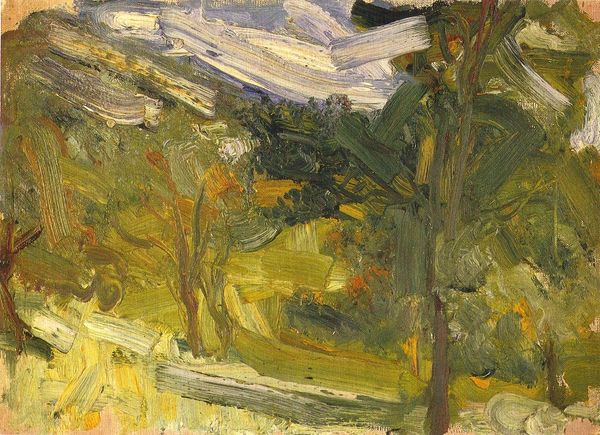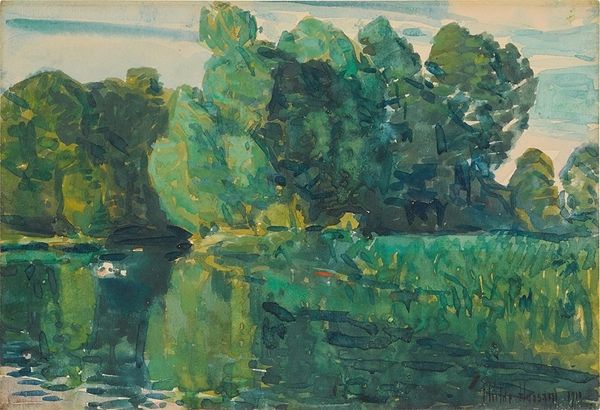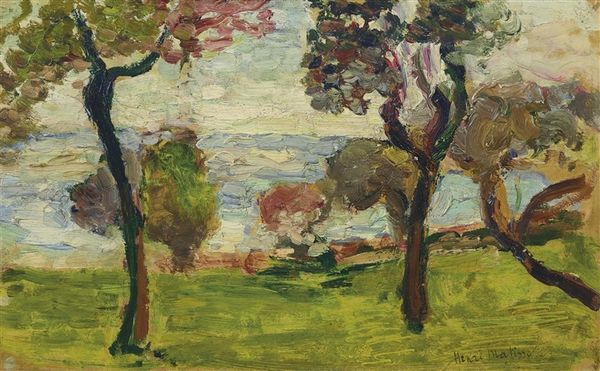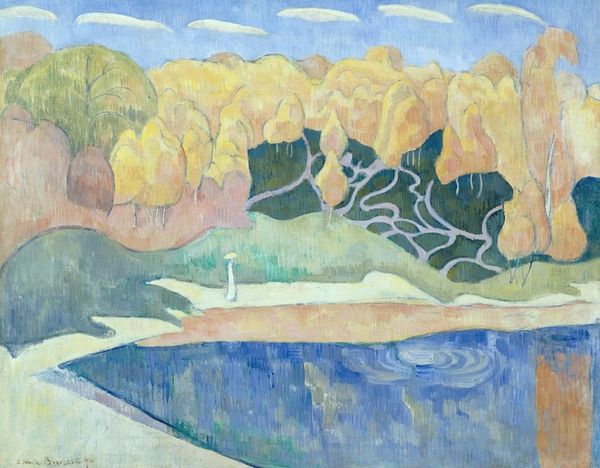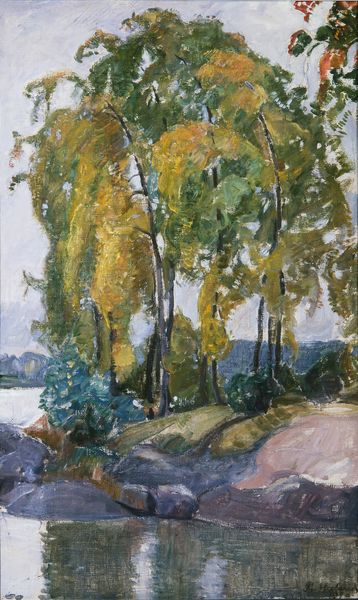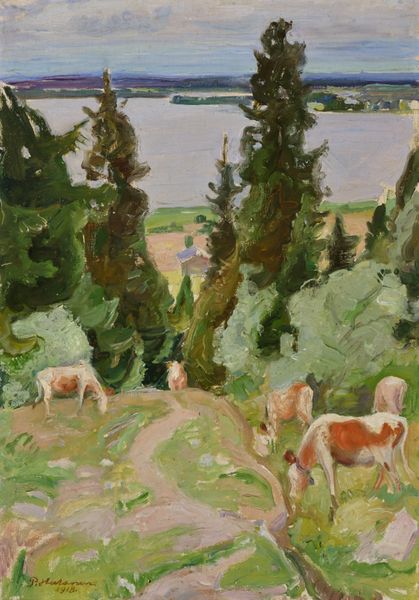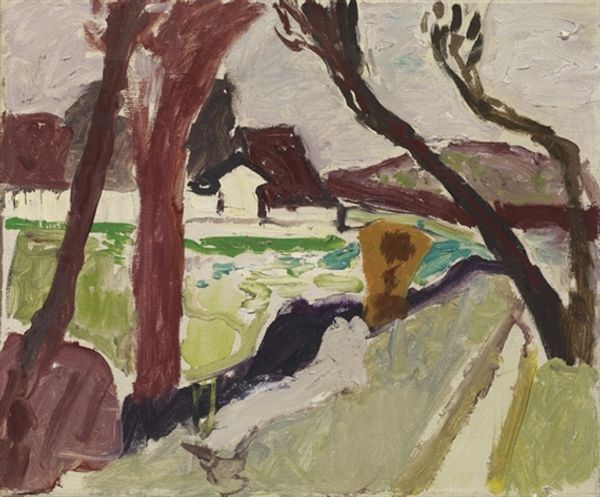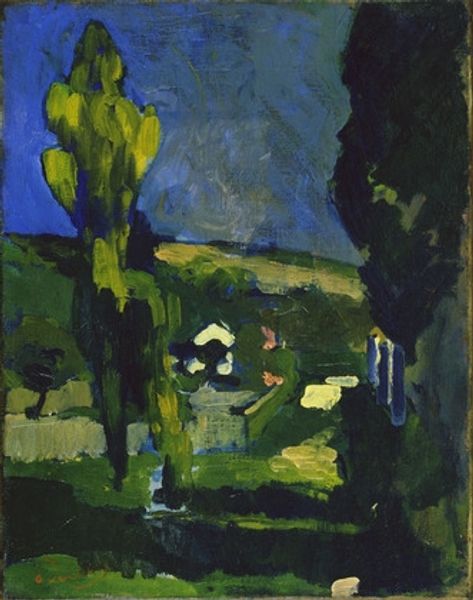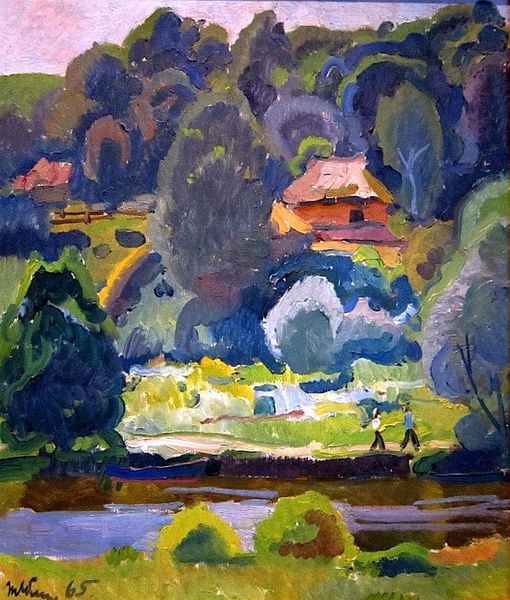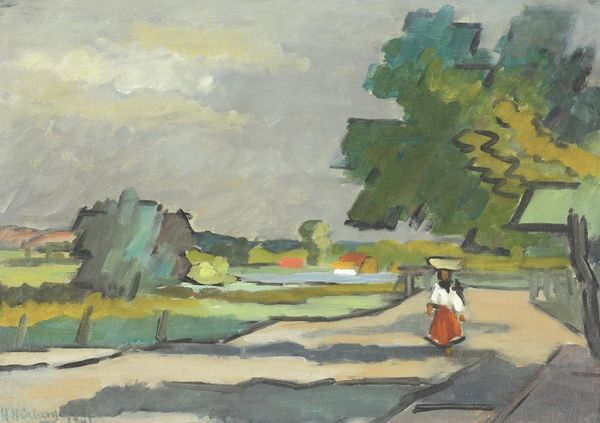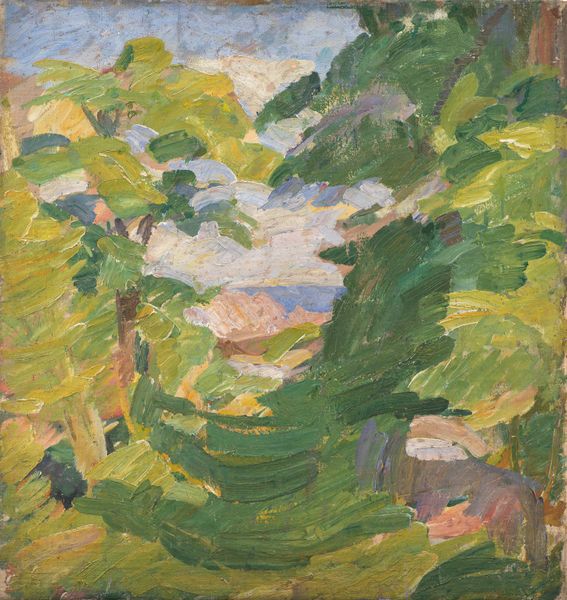
painting, oil-paint
#
painting
#
oil-paint
#
landscape
#
oil painting
#
modernism
#
realism
Dimensions: 46 x 68 cm
Copyright: Mikhail Olennikov,Fair Use
Editor: So, this is "Green Meadow," an oil painting by Mikhail Olennikov. It feels…almost deceptively simple, you know? The brushstrokes are so visible, creating these distinct blocks of colour. What are your first impressions, looking at this? Curator: Indeed. I'm struck by the interplay between the planes of color. Notice how the composition privileges the formal arrangement of colour blocks to convey space, foregoing traditional perspectival techniques, and moving instead toward flatness? Editor: It definitely feels flattened! The field in the foreground, the band of dark green beyond it... How do you think this affects our reading of the landscape itself? Curator: The simplification directs our gaze towards the fundamental pictorial elements: line, shape, colour. Note also the almost crude impasto technique; it’s the visible materiality of the oil paint, its textured surface, which structures meaning as much as the scene it depicts. Editor: That’s fascinating, I hadn't really thought about the paint itself as part of the landscape. It seems to bring a level of abstraction into it, making the landscape seem unreal in a way, yet it is oil-based! Curator: Precisely. It establishes a dialectic – realism rendered through the manipulation of material elements which are inherently non-illusionistic. Now, consider the tonal relations—how does the artist manage colour to maintain both depth and flatness? Editor: So, looking again, the darker greens in the distance contrast the very bright yellow. The eye immediately jumps there, making you wonder how this contrasts between depth and flatness, especially given that a dark green pigment gives more contrast. Curator: The artist teases us with cues for spatial perception, whilst undermining conventional pictorial depth via stark chromatic contrasts, impastoed surfaces, and an overt structural composition. What do we, therefore, learn about realism in landscape painting? Editor: That’s great. I’m starting to see it in terms of layers of structural elements! Thanks. Curator: My pleasure. Hopefully now, you will view abstraction in new ways as well.
Comments
No comments
Be the first to comment and join the conversation on the ultimate creative platform.
